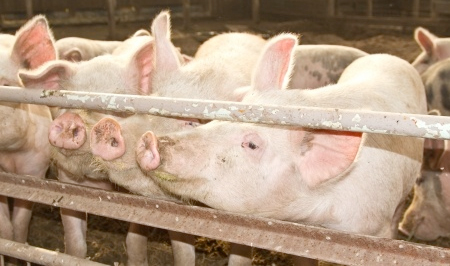
A worrying increase in milk spot lesions in pigs slaughtered in England is revealed in the latest survey data from the BPEX Pig Health Scheme.
They show the number of pig livers totally or partially condemned because of this costly problem – caused by the large roundworm, Ascaris suum – has increased by about 25 per cent since April last year.
In April last year 294 of the 19,692 pigs assessed had milk spot livers. In January the figure was 403 of 18,431pigs, an increase of 27 per cent. Nationally, the figure would represent a significant financial loss to producers and processors.
Phil Macdonald of Elanco Animal Health says the escalation underlines the urgent need for producers to ensure they have a strategic worming programme in place. “Programmes need to be based on the pre-patent period of worms, so that treatment interrupts their life cycle. They also need to cover every pig on a unit – otherwise there is a higher potential for reinfection.”
In the tough economic climate the industry is experiencing it’s also likely that some producers have been tempted to cut spending in areas such as worming, he says. But this carries quite a risk, he warns. Research shows that with liver condemnations at 20 per cent in a consignment the losses in average daily gain alone cost units about £9 for every slaughter pig – not only those with milk spot.
Worm infestations can harm growth rate and feed efficiency, they can reduce abattoir returns and increase the cost of medication.
“Flubendazole is effective against the larvae and eggs of a number of worm species, including the large roundworm. Such a programme will reduce high worm burdens to a level where intervals between treatments can be lengthened.”
Adult female worms can each shed hundreds of thousands of eggs a day. Pigs pass them out in their dung. Eggs are highly resistant to disinfectants and can remain infective for several years.
Worm infestations can cause significant damage to pigs. Worms burrow through to livers within hours of pigs ingesting worm eggs. The larvae travel on in the bloodstream to the lungs and then pigs cough up and swallow the larvae, which cause further damage in the small intestine. Infected pigs become susceptible to bacterial and viral respiratory infections, and to secondary infections – adding to the cost of medication.
Phil Macdonald said: “A worming programme should be part of the planning when moving outdoor pigs to a fresh site, to limit the risk of bringing in potential worm burdens with the pigs.”
This approach has been shown to control the large roundworm effectively and to reduce milk spot lesions in pigs’ livers2-4, says Phil Macdonald. “It’s an important step towards the goal of achieving the most efficient and economic pig production.”
